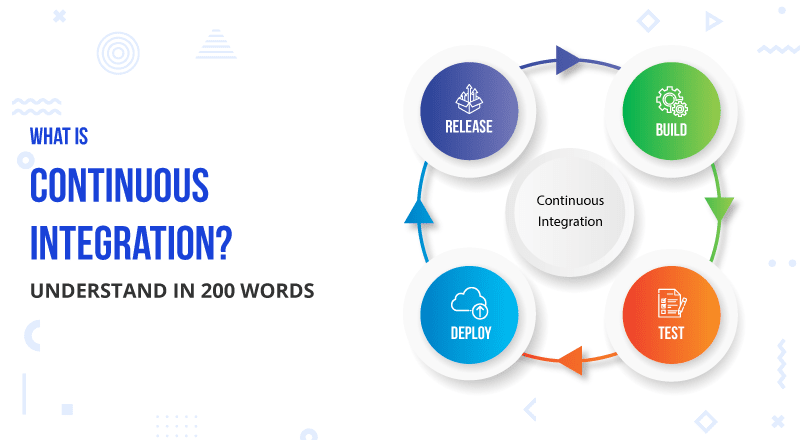Cost Analysis :Continuous Integration VS. Continuous Delivery VS. Continuous Deployment
All are connected in many ways, making it quite challenging to differentiate one from others and perform a cost analysis. To understand the difference and analyze, we will study each separately in-depth.
Continuous Integration
Continuous integration is a technique about how a developer should continuously incorporate technology-rather than periodically-into the mainline.
You can take that this is simply a branching technique that is linked to the scale of the projects you give a developer. If a job is expected to take several days, the designer would not be able to perform for these days as little has been completed-yet.
Continuous Integration ensures that the operating versions of the code are coordinated several times every day with a common mainline. Any separate function is essentially done as soon as possible. Take a production team operating on a specific market program, for example.
The following can occur in several situations:
- For a couple of days, one or two developers retain local improvements because of its unavailability; and
- One or two developers build divisions of the source control of order to be able to “focus on their apps without needing to think about improvements from other users.”
The weak organization of code/tasking contributes to contact, contact contributes to fusion, melting and so many. This is tackled through continuous integration by enabling the team to function from a single place. Specific objects would be adequately discrete to be completed within a limited amount of time.
The key principle is that significant improvement will be incorporated into a short amount of job. Integrating a huge transition is an extremely large job. When achieved in continuous minor measures, the amount of integration function is lower. Instead of overhead production methods, engineers may invest more time focusing on market evident apps.
Continuous Delivery
Continuous Delivery is a logical continuation of Continuous Integration that works with Agile Software Development. CD is about the opportunity to implement agile methodology values, not only as a philosophical idea or letter of purpose but in real life. Continuous delivery is a topic in agile software growth.
Taking account of the first concept of the Agile Manifesto, this is also the first instance in which the word “continuous production” is used: our primary goal is to please the consumer through the creation of quality applications early and consistently.
It says that “continuous delivery” is a philosophy that accepts all the requisite stuff for the automatic testing of the “done description.” Also, it acknowledges that the terms “Continuous delivery” and “DevOps” are the flip side of the one coin and both seek to follow a modern concept or method, not just a methodology.
Continuous Delivery is an alternative expression to Continuous Deployment. It argues that the same term should be done interchangeably with continuous implementation and continuous distribution. When it is ready by the designers, it is transmitted directly to the end-users, which indicates that it is typically executed in the development area. “Attach” is also equivalent to “Deliver.”
Continuous Deployment
In places where the connection of the user to software upgrades depends on the updating of a centralized source of the knowledge and where it is not often possible to change this centralized source because it is colossal or has strong coherence by definition is termed as continuous deployment.
There’s also no speculation on the word Continuous deployment for certain places that generate applications where no centralized knowledge source (apps, user goods, and customer installs, etc.) is located or where a centralized knowledge source may be quickly modified. It’s not a major problem – it’s not a discomfort that needs extra treatment.
Conclusion
Now, we have studied a lot about each other and understand each has different responsibilities and goals. Now, we will take a brief look at each again for more clarity.
Continuous Integration: CI, is a process of fusing the software with the primary division in such a manner that the application can detect glitches accurately, precisely and promptly.
Continuous Delivery: Continuous delivery is important to business. The idea behind is simple — the product delivered to a user can be QA’s for inspection. It is not possible for unit tests to detect every problem, especially glitches in design, which is why we need a set-up environment for testing.
Continuous Deployment: The deployment is, in simple terms, is a release of code as soon as it’s prepared. CD involves Continuous Integration and Continuous Delivery. Without any of them, the quality of a code won’t be an assurance in a release.
To cut a long story short, Continuous Deployment is a sum of Continuous Delivery and Continuous Integration. CI and CD, both, are the processes involved copious code changes while assuring that any amendment carried down by the designer would remain intact.




